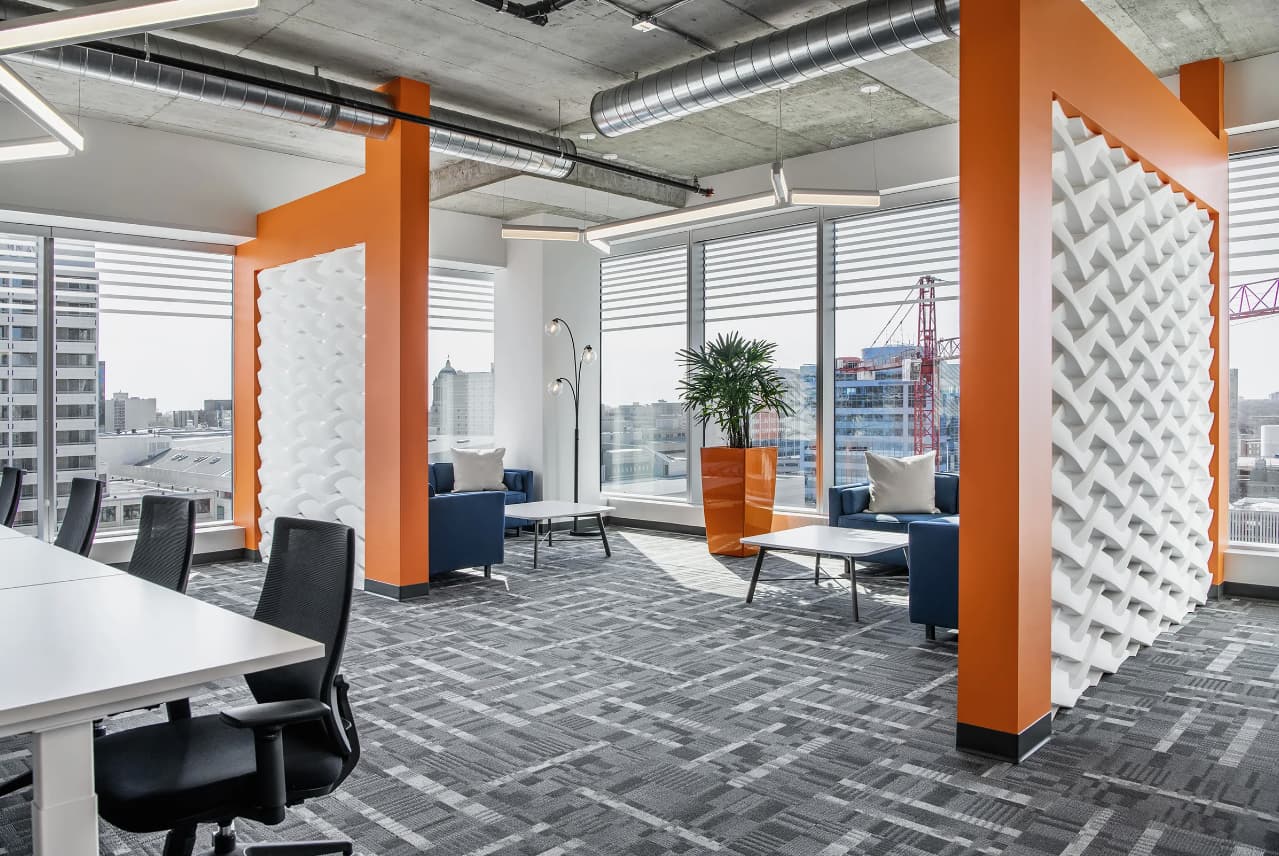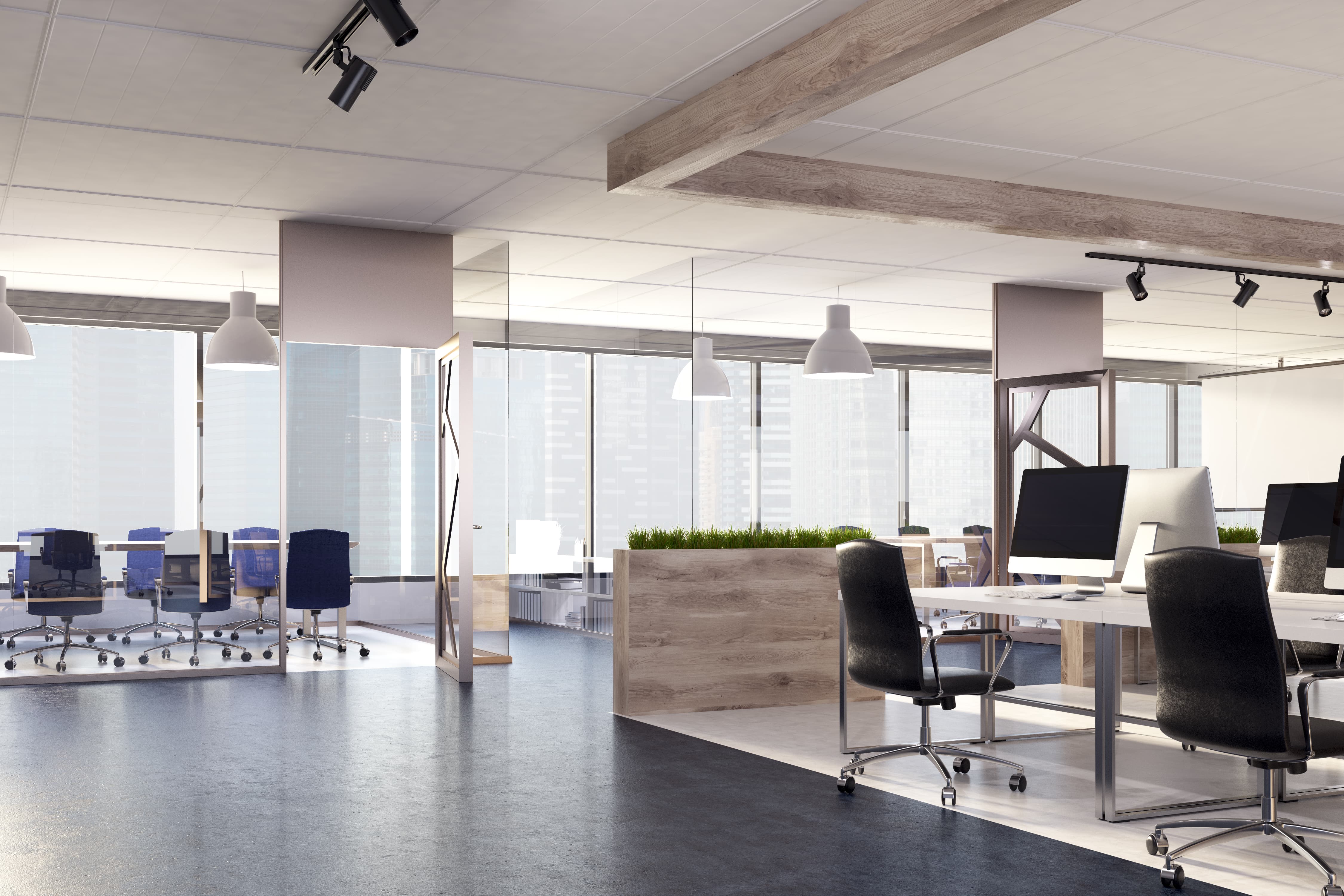If you’re looking for a new commercial space, it’s probably been difficult to find one that exactly matches your requirements. Most will need some customisation and these leasehold improvements can be very costly.
Read on to find out how negotiating Tenant Inducement Allowances and working with a specialist design consultancy can help to reduce the cost of leasehold improvements.
What is a Leasehold Improvement?
Leasehold improvements are alterations that make a space more suitable for the tenant’s needs. This could be something minor like repainting the walls or a major change like turning an open plan space into individual offices.
However work only counts as a lease improvement if it is to the sole benefit of that specific tenant. If the work benefits any other tenants in the building, it isn’t classed as a leasehold improvement.
Click here for more information on leasehold improvements.
Who owns Leasehold Improvements?
In most cases, leasehold improvements become the landlord’s property as soon as work is completed.
However the tenant is required to maintain the alterations as if they are their own property and must have sufficient insurance to repair any damage. And at the end of the lease term, you may need to remove any alterations and make sure there are no signs of damage left behind.
Who pays for Leasehold Improvements?
The tenant is usually responsible for the cost of leasehold improvements, but the landlord may be willing to offer a ‘leasehold improvement allowance’ as an incentive. This is a set contribution towards the cost of commercial tenant improvements and you will be responsible for any additional costs.
Landlords may also offer ‘turnkey tenant improvements’ which is where the tenant picks from a landlord’s set range of options. However this can sometimes result in corners being cut to save money so unless you are simply picking paint and carpet colours, it is generally better to choose Tenant Inducement Allowances (TIA).
There is currently a strong tenant market which means that you could be in a good position to negotiate additional TIA. But do bear in mind that Tenant Inducements are classed as income to the tenant so a rent reduction could be a more attractive option.

How to reduce Leasehold Improvement costs
The more alterations a space needs, the higher the cost. So the best way to reduce the cost of leasehold improvements is to find a space that doesn’t need many changes.
Spaces that were used for a similar purpose as your own will probably need fewer alterations, while new builds may even need basic work such as electrical wiring and plumbing. These costs can quickly add up, even before you start thinking about furniture or decorations.
However you may be able to negotiate TIA or a rent reduction to offset the cost of tenant improvements, and working with a specialist design consultancy will help you to reduce costs and streamline the rollout of your leasehold improvements.
What can Tenant Inducement Allowance be spent on?
TIA can usually be spent on the hard costs and soft costs of alterations.
Hard costs refers to work that can be left behind at the end of the lease and could be of benefit to the landlord in the future. They generally make up around 75-85% of the cost of alterations and include things like adding walls, replacing electrical wiring or installing air-conditioning.
Soft costs are also a necessary part of the project but aren’t directly beneficial to the landlord. These make up around 10% of the total cost and could include architect costs or legal fees.
Your landlord will usually accept hard costs but soft costs may need to be defined in the Tenant Improvement Allowance clause of your lease. Other costs that are only beneficial to the tenant, such as fittings and furniture, are not generally covered by TIA. However your landlord may be willing to cover some of these costs to secure the contract.

Working with a Specialist Design Consultant
Hiring tenant improvement contractors and overseeing the alterations yourself means a bigger workload but it can also offer advantages. You can alter details to fit the budget, upgrade materials if required and have more control of timings. And in the event of overruns, you’ll know that you did all you could to control costs.
Bringing in a specialist design consultant to work with you ensures an independent pair of eyes on your project. Their project management skills and in-depth knowledge of the required standards can help to avoid spiralling labour costs due to delays.
And they’ll help to keep your project on track by communicating with all stakeholders throughout the process.
Why choose Truspace?
Truspace is the ideal choice to help you plan and manage your leasehold improvements.
We’ve been providing specialist design services for over 30 years and our depth of experience means we can help to streamline the procurement process and delivery of your project.
Our expert designers and engineers are specialists in creating bespoke designs and purpose built spaces, using leading edge technologies and proven concepts. Combined with our strong relationships with high quality suppliers and contractors, this can all help to deliver reduced project costs.
So when you’re planning a move into a new commercial space, why not contact Truspace to see how we can make the process smoother.




